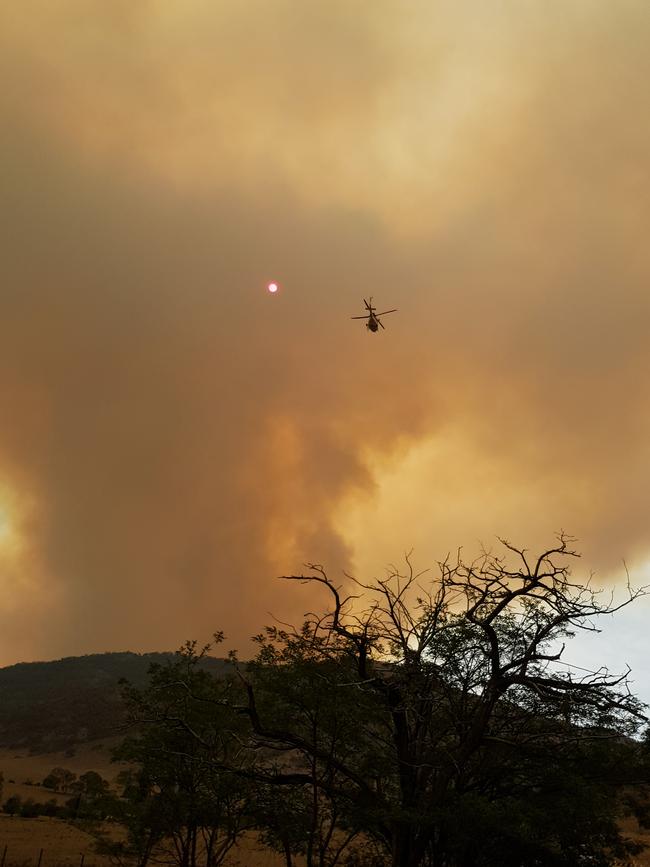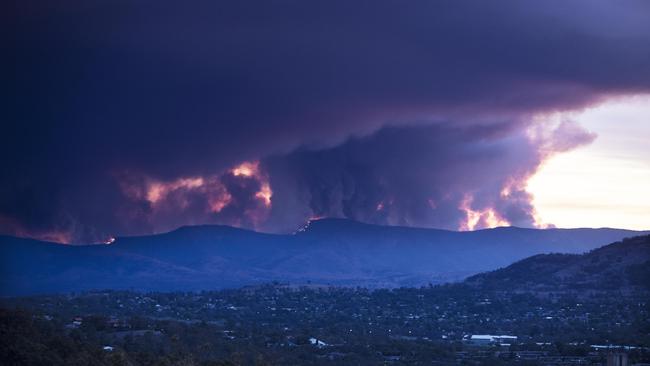Helicopter which started bushfire near Canberra was ‘engulfed’ with flames with 12 crew on board
“It would have been a very, very different outcome”, were it not for quick thinking crew members, Major General Jake Ellwood said.
Canberra Star
Don't miss out on the headlines from Canberra Star. Followed categories will be added to My News.
The Australian Army helicopter which caused the most serious bushfire near Canberra since 2003 was nearly engulfed in flames and the 12 soldiers on board are lucky to be alive.
Major General Jake Ellwood on Wednesday revealed further details about the Taipan helicopter which sparked the 10,000ha Orroral Valley fire in Namadgi National Park south of Canberra.
“The helicopter came down to land and within about 12 seconds the aircraft was almost engulfed in flames,” he said.
“If not for the actions of that crew it would have been a very, very different outcome.”

The helicopter was on Monday landing in a remote stretch of the national park, as part of efforts to clear land and conduct reconnaissance in the then-bushfire free national park.
A powerful landing light is thought responsible for igniting dry grass.
Major General Ellwood said a full-blown investigation into the cause of the fire will take months, but that crews had been ordered to stop using landing lights, a move which “does come with more inherent risks”.
Firefighters were on Wednesday taking advantage of what ACT Emergency Services Commissioner Georgeina Whelan described as a “break in the weather” following a disastrous day on Tuesday, in which the fire more than quadrupled in size.
The fire was on Wednesday downgraded twice and by afternoon was at “advice” level, but authorities are concerned the fire might return with a vengeance as conditions worsen this week.
“There is no one sized fits all solution to fires such as this,” Ms Whelan said.
Ms Whelan fears the fire will be burning for weeks.


ACT Chief Minister Andrew Barr warned of “more challenging days ahead for Canberra”, especially the village of Tharwa and the city’s southernmost suburbs of Banks, Conder and Calwell.
“We will be managing this fire for some time,” Mr Barr said.
“It will burn more land and it is simply not possible to extinguish in rugged terrain.”
Mr Barr said the government was “preparing for all scenarios”, including the mass evacuation of suburbs if conditions worsened and the fire approached.

Most homes in the most at-risk suburbs had been doorknocked by Wednesday afternoon, with police and emergency services crews telling residents they should be prepared to leave and should keep close tabs on the fire in coming days.
The fire on Wednesday spread aggressively to the west, into rarely-visited parts of the national park, and sparked a spotfire over the border in NSW near the Grassy Creek fire trail, and the far southern end of the park.
